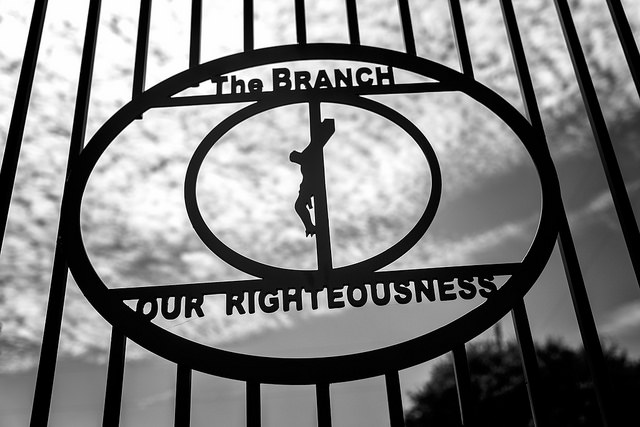The Relevance of Religious Studies
No doubt many members of every profession and every professional (and academic) organization find occasions to speak up and protest the failure by people in strategic positions—in government, media, and the like—to be aware of the resources such organizations and their personnel possess, and thus to overlook their potential for being of use for the common good
By Martin E. MartyDecember 4, 2017
 No doubt many members of every profession and every professional (and academic) organization find occasions to speak up and protest the failure by people in strategic positions—in government, media, and the like—to be aware of the resources such organizations and their personnel possess, and thus to overlook their potential for being of use for the common good. We can focus on an instance which brings this situation to attention. We’ll depend upon Cathy Lynn Grossman of Religion News Service to reflect on this. Here it is:
No doubt many members of every profession and every professional (and academic) organization find occasions to speak up and protest the failure by people in strategic positions—in government, media, and the like—to be aware of the resources such organizations and their personnel possess, and thus to overlook their potential for being of use for the common good. We can focus on an instance which brings this situation to attention. We’ll depend upon Cathy Lynn Grossman of Religion News Service to reflect on this. Here it is:
If you were of age in 1993, or have consulted the histories dealing with a major incident of that time, you don’t need to be reminded as to who the Branch Davidians were, and what the Federal Bureau of Investigation did to them on April 19th of that year. For newcomers to the scene, we remind readers that these “Davidians” were well-known for their extremist activities at Waco, Texas, in that day. They were a typical “cult” during a decade in which intense and isolated religious groups were a threat to their neighbors, the relatives of their members, and the public at large. In that April incident, the FBI, urged by public opinion, set out to discipline them and prevent them from creating public disturbances. Yet, create a disturbance they did.
The FBI, being bigger than the Davidians, and representing governmental authority, lost patience with efforts to drive these cultists back, or out, or down, without much effect. So the Bureau put to work an armored vehicle, which devastated the Davidians’ buildings, and followed up by shooting tear gas at the members. Everything that could go wrong, did, and when the incident was over, the FBI had killed 75 members. Of course, citizens were shocked, some bewildered, some awed, some cheering. What all had in common was some degree of ignorance with respect to the cult and little awareness of ways to understand them, deal differently with them, and counter them as creatively as possible.
What was noticed was that the FBI, other agencies, and the public at large were not aware of instruments and agencies that might have helped produce more positive—to say the least!—effects that April 19th. What most of the policing agencies had in common was understandable befuddlement, ignorance, and often prejudice about and against the cults, the people in them, and even rudimentary ways of understanding and dealing with them.
Most in the public simply scorned all “cultists,” and life went on. But some experts came out of the shadows and showed that they had light to shine, light which sometimes might prevent alarming and disruptive incidents from taking place. And what most of these experts had to offer was knowledge of and experience with religion in its many meanings and manifestations in 1993—just as their successors do in 2017. Most publicized, according to Ms. Grossman, was the American Academy of Religion, which “revisited” the Waco disaster at Harvard Divinity School during its annual meeting in Boston this November. Scholars in the AAR probe religion in its many expressions, many if not most of them ignored among many professions and by the general public.
It would be absurd to argue that all citizens should devote their years to studying “cults” and other complex—or even simple!—features of religion. But the AAR is setting up mechanisms and establishing links with, in this case, the FBI, to head off the worst and understand the best in a world where, in regard to religion, some misuse their freedom and are hazards instead of healers. The University of Pennsylvania’s Steven Weitzman summarized: the “FBI has been a major player, and sometimes a major disrupter in American religious life.” Now he sees some AAR scholars “trying to change the culture ‘for the good of all and the future of religiously motivated dissent’ at a time when” much violence is promoted by people who make religious claims.
Resources
- Childress, Sarah. “10 Things You May Not Know About Waco.” PBS. February 28, 2013.
- Grossman, Cathy Lynn. “Forged in Waco’s fires: The FBI and religion scholars reflect on their 25-year relationship.” Religion News Service. November 28, 2017.
Image: Detail from the entrance gate at the Mount Carmel Center (Branch Davidian compound), outside of Waco, Texas | Photo Credit: Lorie Shaull/Flickr (cc)
 Author, Martin E. Marty (PhD’56), is the Fairfax M. Cone Distinguished Service Professor Emeritus of the History of Modern Christianity at the University of Chicago Divinity School. His biography, publications, and contact information can be found at www.memarty.com. Author, Martin E. Marty (PhD’56), is the Fairfax M. Cone Distinguished Service Professor Emeritus of the History of Modern Christianity at the University of Chicago Divinity School. His biography, publications, and contact information can be found at www.memarty.com. |
Sightings is edited by Brett Colasacco (AB’07, MDiv’10), a PhD candidate in Religion, Literature, and Visual Culture at the University of Chicago Divinity School. Sign up here to receive Sightings via email. You can also follow us on Facebook and Twitter.


